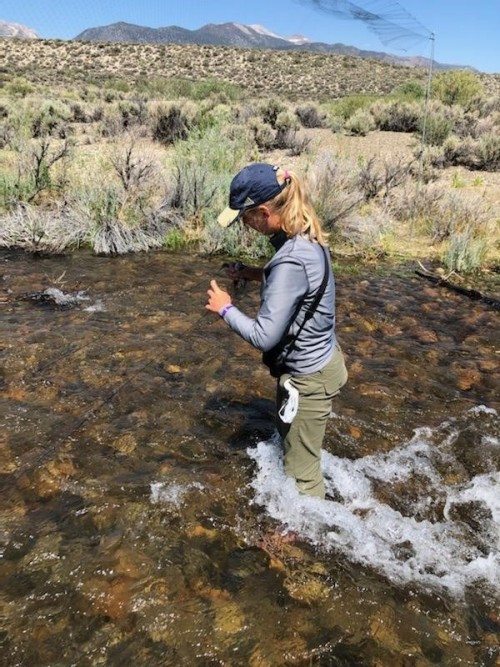MSOE RPC develops sandpiper decoys for U.C. Davis research student
A recent collaboration between the Mechanical Engineering Department and the Rapid Prototyping Center (RPC) provided a University of California-Davis Ph.D. student with an essential aspect for her research project on spotted sandpipers.
 Jessica Schaefer is in the Animal Behavior Graduate Group at U.C. Davis and doing field research in the eastern Sierra Nevada Mountains on spotted sandpipers. Spotted sandpipers are shorebirds that occur across North America and are distinctive in both looks and actions. During her summer field work, Schaefer needs to safely capture birds in order to take measurements and blood samples, and band the birds for identification. To attract the sandpipers, she uses recorded birdsongs along with a set of decoys—which is where Dr. Matt Schaefer, associate professor in the Mechanical Engineering Department, comes in.
Jessica Schaefer is in the Animal Behavior Graduate Group at U.C. Davis and doing field research in the eastern Sierra Nevada Mountains on spotted sandpipers. Spotted sandpipers are shorebirds that occur across North America and are distinctive in both looks and actions. During her summer field work, Schaefer needs to safely capture birds in order to take measurements and blood samples, and band the birds for identification. To attract the sandpipers, she uses recorded birdsongs along with a set of decoys—which is where Dr. Matt Schaefer, associate professor in the Mechanical Engineering Department, comes in.
Jessica Schaefer happens to be Matt Schaefer’s daughter, and when he saw the decoys she was using, he was rather unimpressed—and if he was unimpressed, imagine what the sandpipers thought. He set out to create an enhanced decoy model for her research.
Matt Schaefer developed a model of the sandpiper on SolidWorks, a computer-aided design (CAD) program he also teaches to mechanical engineering freshmen. Once he had the SolidWorks model ready, he connected with Jordan Weston, manager of operations at MSOE’s Rapid Prototyping Center. They met to discuss the end use of the models, what sort of environmental conditions the decoys would be subject to, and then determined a 3D printing process and material that would withstand those conditions. They chose ‘selective laser sintering’ with a nylon material and printed all of the parts at once over the weekend, going from concept to printed product in a matter of days.
“A team of graduate and undergraduate MSOE students did the setup, printing and post processing of the decoys,” explained Weston. “We have about 12-15 paid student positions during the year and align with the experiential learning vision that the university has. We also provide printed parts for senior design, or any other appropriate academic use of 3D printing to the MSOE community at no cost.”
The team developed four different models to match the varying colors and sizes of male and female sandpipers. With the decoys printed, the next step is for Jessica Schaefer to paint them in a realistic color and then utilize them in her field work this summer.
This cross-campus collaboration provided students with experiential learning opportunities in the RPC, showcased how course work can be applied to real-world projects, and exemplified the power of partnerships—both on campus and between universities. Plus, it gave a father and daughter the chance to combine their passions and work together on an academic project while at two different universities across the country from one another.
From the Field - Photos by Jessica Schaefer

A sandpiper perched in a tree in the Eastern Sierra Nevada.

Jessica Schaefer's office: the Eastern Sierra Nevada. This is one of the sites she studies sandpipers for her Ph.D. research.

One of the sites Jessica Schaefer does field work in the Eastern Sierra Nevada.
